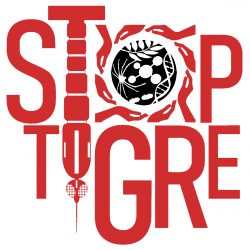The STOPTIGREprojec t is designed to contribute to the development of an innovative, sustainable and effective approach to the monitoring and control of the Asian tiger mosquito. The project, which started in 2015, is part of a memorandum of understanding between the Department of Biology of the University of Naples Federico II and the Municipality of Procida. The project was designed to encourage, from its very early stages, the direct participation of citizens and of the administration of the island and to involve them in Citizen-science actions aimed at studying the spatial distribution and the trend over time of the local tiger mosquito population. These actions of Citizen-science have made it possible to collect the preliminary entomological data that form the basis for planning the future release of sterile males on the island and thus arriving at its elimination. The island of Procida has unique characteristics for the purposes of the project: small size (only 3.7 Km2), high population density, high density of the Asian tiger mosquito population and famous image in the world, today also as Italian Capital of Culture 2022. Our project, given the peculiar characteristics of the island, could lead to the complete eradication of the tiger mosquito from its territory. Such an outcome would have a major scientific and social impact. In fact, to date, such a mosquito has not yet been eradicated in any invaded area of the world. The Campania region also has a unique condition, having in addition to Procida, two other islands with a strong tourist vocation of increasing size, Capri (12 Km2) and Ischia (40 Km2). This would make it possible to apply the results and methods defined in Procida on an increasingly complex scale. The project could thus make Campania the first place in the world with an archipelago of islands freed from the threat of the tiger mosquito with eco-sustainable biotechnological tools and through the active participation of citizens.

The participation of citizens in the project, including the involvement of schools and associations, represents an important peculiarity of our approach and could also allow the development of a regional low-cost monitoring network for invasive mosquitoes with great educational potential in the direction of community educational pacts and service learning towards which the Italian school is increasingly orienting itself.
The phases of the STOPTIGRE project
The STOPTIGRE project is organized in six operational phases designed to collect, with the participation of citizens, the bionomic data of the local tiger mosquito population and then to arrive at community-based release tests of sterile males for the eradication of this vector insect from the entire island territory.
Each phase involves the experimentation of innovative Citizen-science practices and community engagement that are based, among other things, on the use of new technologies such as smart apps, web-based solutions and 3D printing.
For the implementation of the six phases of the project, teachers and researchers of the University of Naples Federico II are making use of the collaboration of experts from other national and international research institutions (see the PARTNERS section) with an innovative and multidisciplinary approach (to date involved: biologists, entomologists, parasitologists, doctors, mathematicians, geo-statisticians, artists, humanists, computer scientists, scientific communicators).
PHASE 1 – START-UP AND PRELIMINARY SOCIO-ENVIRONMENTAL ASSESSMENT.
PHASE 2 – ANALYSIS OF THE SPATIAL AND TEMPORAL DYNAMICS OF THE LOCAL TIGER MOSQUITO POPULATION THROUGH MONITORING WITH OVITRAPS AND CITIZEN PARTICIPATION.
PHASE 3 – EVALUATION OF THE DENSITY PER HECTARE BY MEANS OF STERILE MALE RELEASE EXPERIMENTS AND THEIR RECAPTURE.
PHASE 4 – INVOLVEMENT OF SCHOOLS AND OUTREACH ACTIVITIES.
PHASE 5 – INVOLVEMENT OF THE ISLAND COMMUNITY IN THE CAMPAIGN OF ELIMINATION OF LARVAL BREEDING SITES THROUGH JOINT INTERDISCIPLINARY ART-SCIENCE ACTIONS.
PHASE 6 – SUPPRESSION EXPERIMENT BY RELEASING STERILE MALES.
STOPTIGRE and the objectives of the UN2030 Agenda, the PNR and the PNRR.
The STOPTIGRE project, for the objectives set and for the methodologies used, is part of the following lines of action and areas of intervention of the UN agenda for sustainable development, the national research plan 2021-2027 and the national recovery and resilience plan:
UN SUSTAINABLE DEVELOPMENT AGENDA
The STOPTIGRE project embraces the following Sustainable Development Goals of the United Nations 2030 Agenda:

NRP 2021-2027
The STOPTIGRE project mashes the following NRP method approaches: co-design with the involvement of the scientific community and stakeholders, mission-oriented research, Citizen-science, multidisciplinary research approach; the following system priorities of the NRP: strengthening interdisciplinary research, ensuring the centrality of the person in innovation, enhancing the circulation of knowledge and skills between the world of research and the production system (third mission), exploring the future towards new horizons of research; the following major areas and areas of R&I intervention of NRP: health (biotechnology), humanistic culture and creativity (social transformations and inclusion society), climate (climate change, mitigation and adaptation), environment (green technologies).
PNRR
The STOPTIGRE project is part of the following missions of the PNRR:



